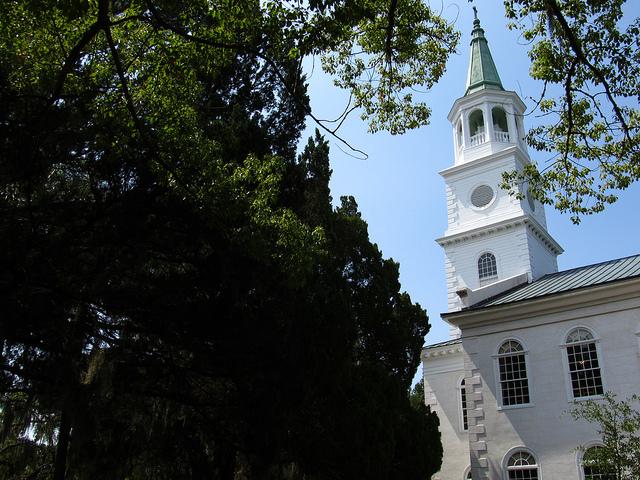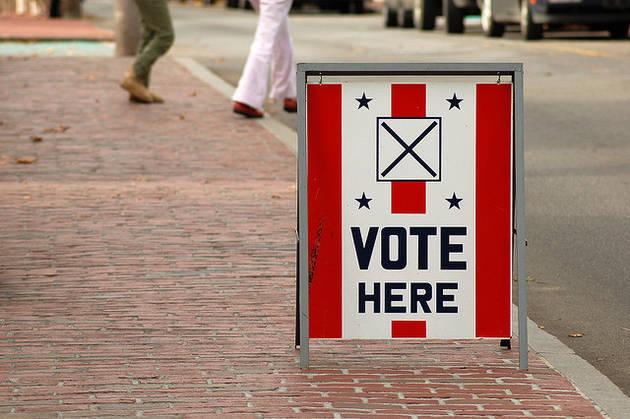
Flickr user Ken Lund
A group of Episcopal churches in the coastal region of South Carolina has secured a temporary restraining order allowing only a few members of the separating body to use the name the "Diocese of South Carolina".
The national Episcopal church body, The Episcopal Church, also lays claim to the name.
You can read more about the temporary ruling below, and more about the split over here.
Three Beaufort area churches have moved to leave the national church, The Parish Church of St. Helena, Bluffton's Church of the Cross, and Hilton Head's St. Luke's Church.
A release from the seperating churches:
St. George, SC, January 23, 2013 – South Carolina Circuit Court Judge Diane S. Goodstein today issued a temporary restraining order that prevents The Episcopal Church (TEC) and parishes and individuals associated with it from assuming the identity of the Diocese of South Carolina.
The judge’s order states, in part: “No individual, organization, association or entity, whether incorporated or not, may use, assume, or adopt in any way, directly or indirectly, the registered names and the seal or mark of The Protestant Episcopal Church in the Diocese of South Carolina.”
The order specifically prohibits all but a handful of Diocesan employees, directors and trustees who are specified by name from using the Diocese’s identity.
The judge effectively prevents TEC, a voluntary association, and the parishes who support it, from claiming to own or operate the Diocese of South Carolina, an entity that it insists it owns but whose very existence predates The Episcopal Church. The Diocese of South Carolina was established in 1785 and was a founder of TEC nearly five years later. The Diocese is a legally established South Carolina corporation and its trademarks are protected under state law.
TEC and several local parishes that remain associated with it have begun to assume the Diocese’s identity and use its seals, name and trademarks on websites, ads in newspapers, and other documents sent to parish corporations and individuals, and in registration forms mailed to the parishes within the Diocese stating its intent to take actions at its upcoming meeting on January 26.
The order states “The use of the names and marks of the Diocese of South Carolina can affect its goodwill, its third party relationships and create confusion among those with whom it deals in the ordinary course of its business. In short, the ongoing business of the Diocese of South Carolina could be irreparably injured if corporate changes occur in its name, implemented by those without actual corporate authority.”
Judge Goodstein’s order, which takes effect immediately, prohibits such misappropriation of the Diocese’s identity for 10 days. A hearing has been scheduled for February 1 to determine whether the temporary restraining order should be replaced by an injunction that could extend the prohibition until the court rules on a lawsuit filed recently by the Diocese of South Carolina, its trustees and 31 congregations, seeking to protect the Diocese’s real, personal and intellectual property and that of its parishes from a TEC takeover.
The judge’s decision comes days before TEC has scheduled to convene a “special convention” meeting, purportedly to choose new leadership for the Diocese of South Carolina. The stated goal of the meeting is to elect a provisional bishop and clergy and lay people to serve in diocesan positions to fill vacant offices of an organization whose ownership is contested.
TEC has historically filed lawsuits against parishes and dioceses that have disassociated over theological differences with the church, and has evicted congregations from their churches. In all, TEC has filed more than 80 lawsuits, spending more than $22 million in legal fees.
Locally, 44 of the Diocese’s 71 parishes and missions have voted to support the Diocese; 16 support TEC and 11 still remain undecided. The parishes and missions supporting the Diocese represent about 77 percent of the Diocese’s 30,000 members.


